L’arte della resilienza per la città consolidata
Abstract
L’Architettura del Paesaggio è tra le arti della città che ne consolidano i suoi spazi, sia da un punto di vista estetico, sia da un punto di vista ecologico, contribuendo sostanzialmente alla loro futura sostenibilità.
Dalla origini dell’Architettura del Paesaggio e nel processo di crescita esponenziale della città iniziato a metà dello scorso secolo, è nata una generazione di architetti del paesaggio che, durante gli anni ʼ60, partendo da Ian McHarg, si sono posti il problema di come costruire nuovi modelli sostenibili di crescita. Tra le varie scienze, l’ecologia e la resilienza sono state riconosciute come fondamentali per l’evoluzione della disciplina dell’Architettura del Paesaggio in relazione ai problemi della città.
Il famoso saggio The ecology as an agent of creativity di James Corner è diventato un punto di svolta per una nuova poetica ecologica urbana, aprendo prospettive inedite per lo sviluppo successivo della teoria del Landscape Urbanism. Con Corner, la resilienza ecologica si discosta dal determinismo meccanicistico di McHarg e si declina secondo modelli artistici e poetici.
Il testo si propone di delineare l’arte della resilienza per la città consolidata secondo tre categorie di appartenenza: l’arte della resilienza estetica, l’arte della resilienza sociale e l’arte della resilienza ecologica. Per meglio spiegare queste tre categorie, il testo si avvale di tre esempi emblematici di parchi che costituiscono il carattere passato e più recente della città di New York: il Central Park, il Brooklyn Bridge Park, e l’High Line.
The Resilient Art for the Consolidated City
The art of Landscape Architecture helps to consolidate city spaces, both aesthetically and ecologically, contributing to the city's future sustainability.
Following the origin of Landscape Architecture along with the processes of exponential city growth characterizing the middle of the last century, a new generation of landscape architects was born during the 60’. Starting from the theories of Ian McHarg, they studied and developed methodologies to redesign new city sustainable models. Among the various sciences related to the landscape, ecology and resilience were recognized fundamental for the discipline of Landscape Architecture concerning sustainable city processes.
The famous essay The ecology as an agent of creativity by James Corner became a turning point; a new poetic design for the urban ecological spaces was created, anticipating the theory of Landscape Urbanism, later better developed. With Corner, the ecological resilience was divided from the mechanistic determinism of McHarg’s methodology and grew according to artistic, imaginative, and poetic models.
The text proposes to outline the art of resilience for the consolidated city according to three categories of belonging: the resilience of aesthetic art, the resilience of social art, and the resilient ecological art. To better explain these categories, the text uses three typical examples of parks that represent the heritage and most modern features of the city of New York: the Central Park, the Brooklyn Bridge Park, and the High Line.
Parole chiave
Full Text
PDFDOI: https://doi.org/10.14633/AHR173
Refback
- Non ci sono refbacks, per ora.
Copyright (c) 2019 Valerio Morabito

This work is licensed under a Creative Commons Attribution-NonCommercial 4.0 International License.
........................................................................................................................................................................................................................................................................................................................................................
ArcHistoR è una rivista open access e peer reviewed (double blind), di Storia dell’architettura e Restauro, pubblicata dall’Università Mediterranea di Reggio Calabria. La rivista ha cadenza semestrale. È una rivista di Classe A (ANVUR) per l’Area 08 - Ingegneria civile ed Architettura, settori C1, D1, E1, E2, F1.
Comitato scientifico internazionale
Maria Dolores Antigüedad del Castillo-Olivares (Universidad Nacional de Educación a Distancia de España), Monica Butzek (Kunsthistorisches Institut in Florenz), Jean-François Cabestan (Université Paris 1 - Panthéon Sorbonne), Alicia Cámara Muñoz (Universidad Nacional de Educación a Distancia de España), David Friedman (Massachussets Institute of Technology), Alexandre Gady (Université Paris-IV-Sorbonne), Jörg Garms (Universität Wien), Miles Glenndinning (Scottish Centre for Conservation Studies, University of Edinburgh), Mark Wilson Jones (University of Bath), Loughlin Kealy (University College Dublin), Paulo Lourenço (Department of Civil Engineering, University of Minho), David Marshall (University of Melbourne), Werner Oechslin (ETH, Zurich, Stiftung Bibliothek Werner Oechslin, Einsiedeln), José Luis Sancho (Dirección de Conservación de Bienes Histórico-Artísticos, Palacio Real, Madrid), Dmitrij O. Švidkovskij (Moscow Architectural Institute, MARCHI)
Comitato direttivo
Tommaso Manfredi (direttore responsabile), Giuseppina Scamardì (direttore editoriale), Antonello Alici, Salvatore Di Liello, Fabrizio Di Marco, Paolo Faccio, Mariacristina Giambruno, Bruno Mussari, Annunziata Maria Oteri, Francesca Passalacqua, Edoardo Piccoli, Renata Prescia, Nino Sulfaro, Fabio Todesco, Guglielmo Villa
........................................................................................................................................................................................................................................................................................................................................................
Laboratorio CROSS. Storia dell'architettura e Restauro

ISSN 2384-8898

This work is licensed under a Creative Commons Attribution-NonCommercial 2.0 Generic License.

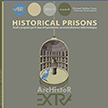
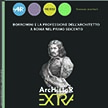
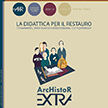
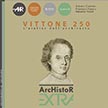
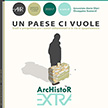
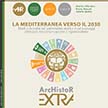
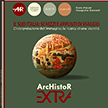
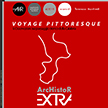
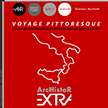
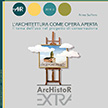
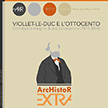

_2.jpg)



